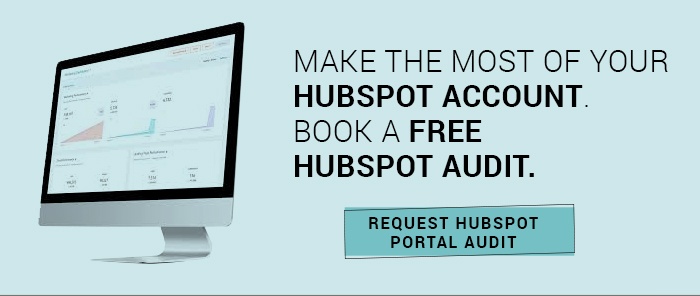HOW TO GET THE BEST RESULTS FROM YOUR CRM IMPLEMENTATION
In our role as a digital marketing agency, we come across many companies thinking about CRM implementation or indeed, switching CRM providers. And it’s fair to say that most are hopelessly unprepared for the requirements of the on-boarding process.
The many benefits of CRM platforms
The benefits of a CRM platform are easy to comprehend and enticing for sales and marketing leaders.
CRM platforms promise centralised information which facilitates the ability to run a decentralised operation with all the benefits of centralisation. You can have your data laddered and layered however you want, depending on the level of management requirements. Managers can move from telling to coaching reps. And sales reps can sell better because they are working to a unified process.
And how great is it to have a complete historical record of a prospect or customer at the touch of a button?
A crafted CRM Platform can create leverage beyond any single sales person because no matter who is speaking to the customer, everyone is empowered with knowledge. This single source of truth, combined with automation is how you create scale and sustainable growth.
This is what we all buy into when it comes to why we implement CRM into our businesses.
Beware of CRM Fools Gold! CRM Utopia is not always achieved
HubSpot research shows that 91% of companies with 11 or more employees use a CRM of some sort. Yet 40% of sales reps still use spreadsheets and their inboxes to store lead and customer information. This impacts the businesses ability to provide data visibility and the ability to continuously improve using this data – let alone waste the upfront CRM investment.
Moreover, once you have purchased the software, be aware that you need to integrate your CRM system. And this requires further investment. We have seen businesses sign up to expensive CRM’s, and then fail to utilise them fully because they never invested in the integration phase and as such their sales teams and the tools fail to deliver on promises.
4 steps to get the most out of your CRM implementation
1.Develop buy in for a unified sales process
Change management is the biggest challenge for businesses implementing a CRM. The first step for successful buy in from your sales team is to understand how the CRM will support existing sales processes.
It all starts by understanding the buying process. From these insights, deal stages can be mapped and linked to actions that are recorded in the CMS. Every business will have a unique take on deal stages however common stages cover – A connect call; Exploratory call; Advise/proposal; Negotiation and Win/lost stages.
Why not run an Inbound Marketing Workshop to begin your journey?
Setting up the custom fields is the next important step to ensure sales force adoption. Nothing infuriates users more than not being able to replicate their unique data fields that might be unique to their business and industry. These custom fields can also often be the glue for sales and marketing team alignment.
Next, you’ll want to create rules around how leads are owned. This step will avoid conflict between sales team members and even between sales and service departments.
Depending on the size of your sales team you will lastly map geographic territories in the CRM for each sales rep. For most CRM’s you can even setup automatic lead routing based on geographic territory rules.
2. Carefully migrate your data
As the saying goes, it’s ‘garbage in, garbage out’, when it comes to the effectiveness of your CRM. So, cleaning your data by removing dirty data like hard bounces and dodgy customer records is an important first step before you migrate data.
Before you commence data migration, it is worthwhile to run a test to predict possible errors and create contingency plans. There’s always a risk of losing data, so take a backup for local storage before migrating data.
Now it’s time to migrate your data. Before you push the button to upload all data, think about uploading chunks or sections at a time to reduce the risk of data being corrupted during the process. You can test each sample before progressing to the next segment.
3.Build out your sales process in the CRM
Now that you have live data, it’s time to build out the features that align with your sales process identified in step 1.
Commence with lead routing automation that ensures the correct sales person receives a lead in a timely fashion so they spend their time selling not searching for leads in the CRM. Time is money when it comes to responding to prospect enquiries.
Set up trigger notifications for sales reps. Email notifications based on tasks and high value prospect behaviours can save time and hone performance effectiveness with reps responding to what matters at any particular point in time.
Sales managers are then encouraged to collaborate with their teams to build out custom lead views to help priortise leads assigned to them.
And finally, tailor reporting to your specific needs. The number of benefits a CRM can provide are numerous however the insights around sales team productivity and performance are probably the most important. This data changes the conversation from subjective assessment to an evidence based one.
4. Monitor and reviewing usage behaviour s
This last step is an ongoing process. However, if not defined and addressed in the implementation phase then accountabilities in terms usage behaviour are likely to be missed. This ongoing monitoring and reviewing of processes is important because behavioural change is difficult to achieve in any business in any situation. And let's face it, if a sales team member starts going 'rogue' and reverting to spreadsheets , then you will have a poor return on investment because implementing a CRM can cost a lot of money in terms of time and cash.


